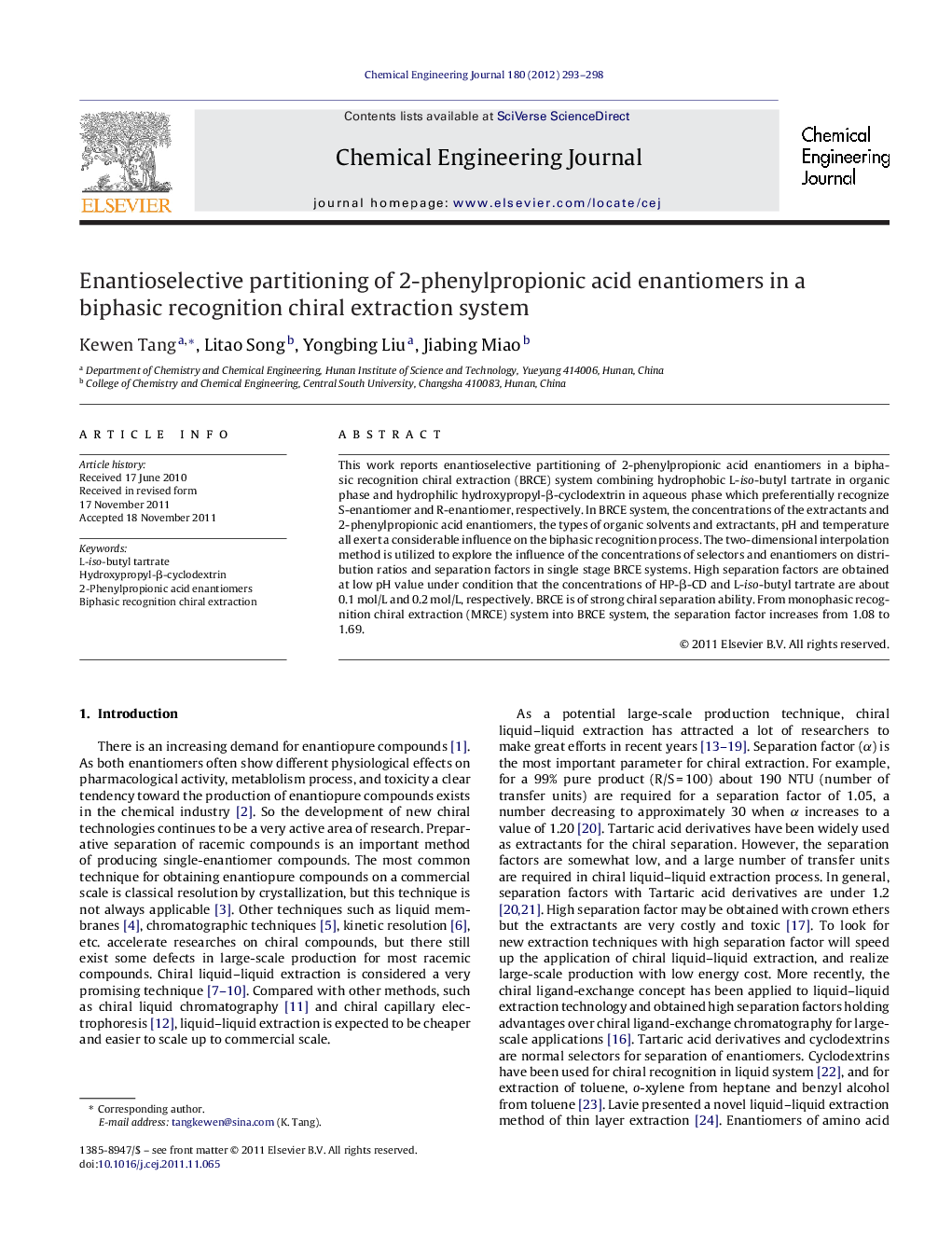| کد مقاله | کد نشریه | سال انتشار | مقاله انگلیسی | نسخه تمام متن |
|---|---|---|---|---|
| 150379 | 456448 | 2012 | 6 صفحه PDF | دانلود رایگان |

This work reports enantioselective partitioning of 2-phenylpropionic acid enantiomers in a biphasic recognition chiral extraction (BRCE) system combining hydrophobic L-iso-butyl tartrate in organic phase and hydrophilic hydroxypropyl-β-cyclodextrin in aqueous phase which preferentially recognize S-enantiomer and R-enantiomer, respectively. In BRCE system, the concentrations of the extractants and 2-phenylpropionic acid enantiomers, the types of organic solvents and extractants, pH and temperature all exert a considerable influence on the biphasic recognition process. The two-dimensional interpolation method is utilized to explore the influence of the concentrations of selectors and enantiomers on distribution ratios and separation factors in single stage BRCE systems. High separation factors are obtained at low pH value under condition that the concentrations of HP-β-CD and L-iso-butyl tartrate are about 0.1 mol/L and 0.2 mol/L, respectively. BRCE is of strong chiral separation ability. From monophasic recognition chiral extraction (MRCE) system into BRCE system, the separation factor increases from 1.08 to 1.69.
► Separation factor is improved considerably by establishment of BRCE system.
► Two-dimensional interpolation method is developed to investigate the influence of various operating conditions on extraction efficiency.
► BRCE can be hopeful for separations of various enantiomers at a large-scale.
Journal: Chemical Engineering Journal - Volume 180, 15 January 2012, Pages 293–298